Getting to know Curaçao

The island of Curaçao lies in the Southern Caribbean about 70 km (44 miles) to the north of Venezuela. Curaçao is the largest of six islands in the Caribbean that together constitute the Dutch Caribbean. The island’s total area is 444 square km (171 square miles). It is generally flat, with a small hilly area in the western part.
Curaçao is characterized by warm tropical temperatures with the highest temperatures occurring in September. The skies are in general mostly clear to partly cloudy. The average temperature in Curaçao is 28 degrees C (76F). Curaçao lies outside the hurricane zone.

